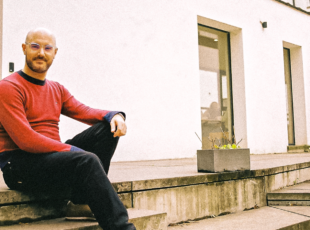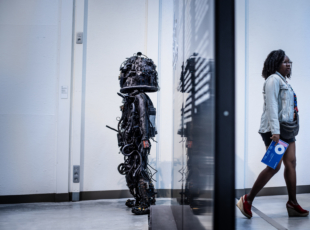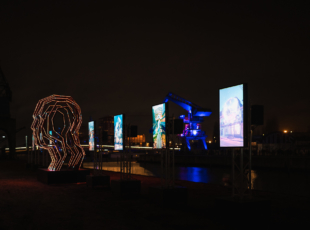Vinciane Debaille: Feet on the ground, head in Mars
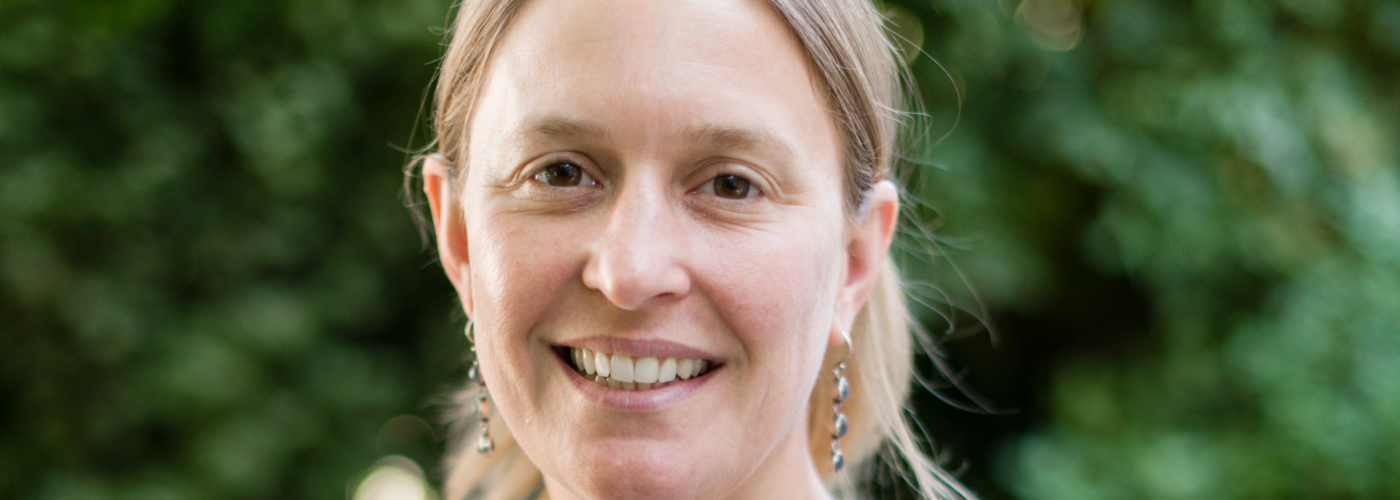
Article author :
Understanding the formation of the red planet is her mantra. To give herself the opportunity of doing so, Vinciane Debaille leads expeditions into the Antarctic with the aim of collecting Martian meteorites. Three years ago she joined the NASA team which gathers samples of rocks found on Mars.
She could easily have pictured herself being an astronaut, and would have loved to take part in a crewed flight to Mars. But myopia thwarted these plans. No matter, it is from the Earth that Vinciane Debaille, a geologist who runs the G-TIME (Geochemistry: Tracing with Isotopes, Minerals, and Elements) laboratory at the ULB, carries out studies of the red planet. During her polar expeditions she surveys the Antarctic continent, on the lookout for Martian meteorites which have fallen onto the ice.
Polar expedition
To help her in her quest, two research associates from her laboratory have created a treasure map identifying the blue ice zones endowed with similar characteristics to those where geologists have already discovered rich concentrations of meteorites in the past. To achieve this, they have assembled, within a single artificial intelligence (AI) algorithm, all of the currently available knowledge concerning these sites: satellite data, certainly, but also field observations of the temperature and the speed at which the ice advances, and information about the continental relief.
Last February, together with her team, Vinciane Debaille set off to spend three weeks in the Antarctic to verify if the areas surrounding the Belgian Princess Elisabeth research station were indeed zones of meteorite accumulation, as the AI had indicated. She was able to benefit from the Belgian polar explorer Alain Hubert having opened up routes to avoid dangerous areas, in particular crevasses, sometimes at the cost of major detours. But she also had to set up camp at -10°C and travel dozens of kilometres on a snowmobile in the sastrugi, snow dunes hardened by the wind.
‘It was quite a short mission compared to previous ones because, for the first time, we were not certain that we would find any meteorites. We therefore ventured into three zones identified by the algorithm. We quickly realised that, unfortunately, they contained numerous Earth-origin rocks: they consisted of dark clusters on the ice, making it difficult to identify meteorites at a glance. Every little black dot not being a meteorite, which explains why we in the end brought back less than in previous missions.’
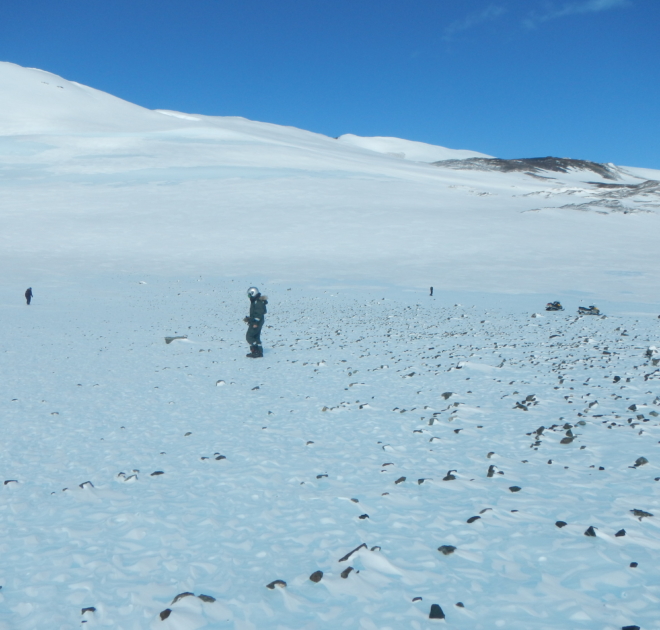
‘After a week at the first site, the harvest was good, but not extraordinary. Later on, not having found any meteorites at the two other sites, our morale was at its lowest point. And then, on the very last day of the mission, since the weather was good, we decided to return to the first site, but this time from the east. Taking that direction turned out to be an inspired choice: very late on in the day, we found a meteorite weighing 7.6 kilos! It’s a relatively rare event to discover such a large meteorite.’
To avoid contaminating it, the team was not allowed to touch the meteorite. Consequently, in order to pick it up, the scientists had to use their ingenuity and improvise a solution. They wrapped it in aluminium sheets, then in large plastic sheets, and finally in bubble wrap to protect it during transportation. Having been kept frozen since its discovery, it is now waiting to yield up its secrets.
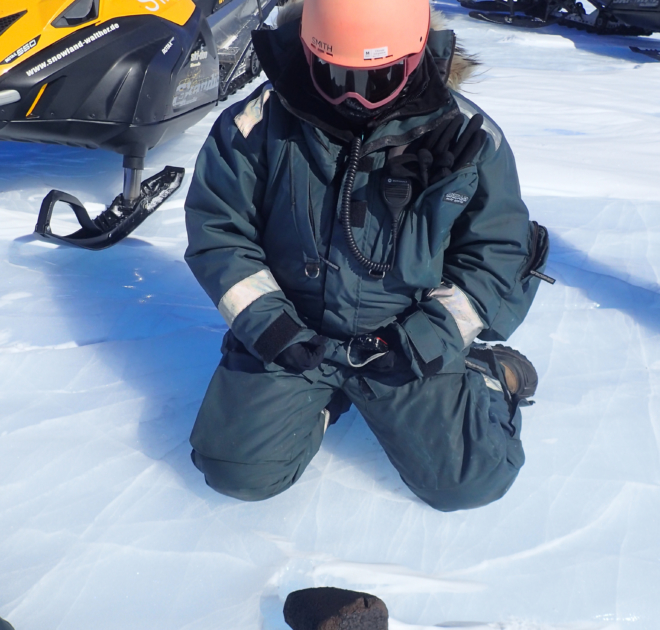
Space exploration mission
Vinciane Debaille has been carrying out expeditions to the Antarctic since 2015. ‘It was at that time I began to get interested in curation. In other words, the methods of conserving the meteorites collected whilst ensuring that they remain available to the science community and future generations. With a view to a future sample collecting programme on Mars, I also joined a European thinktank project to develop ways of bringing them back to Earth and conserving them. As a result, when Mars Sample Return, a joint NASA and European Space Agency (ESA) project, was put on the table, I thought “that’s come at the right time,” convinced I had the skillset required. It was the first space mission I took part in,’ she smiles.
On February 18, 2021, Perseverance, a robot rover capable of drilling into the soil, landed on the Mars surface, on the Jezero crater, the site of an ancient lake forming a zone propitious for the emergence of life. Since that day, Vinciane Debaille has contributed to the rover’s Scientific Committee and technical operations. When it comes to opting to drill into the Martian crust in order to obtain a sample, she is the one who decides. This choice is crucial, because only 43 tubes are available (to date, around ten have been filled), and it will only be possible to bring 31 samples back to Earth during a second mission scheduled for 2033.
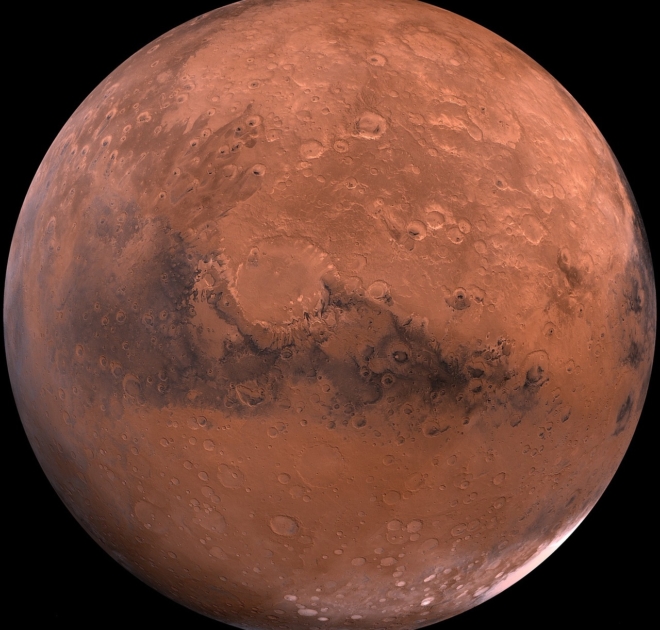

‘Initially, it had been planned that the whole of the space mission team would work together at NASA’s Jet Propulsion Lab, in California. It was meant to take place from May to July 2020. But then COVID struck so that idea fell by the wayside, and I had to remain in Belgium; I was like a fish out of water. At the beginning, it wasn’t easy to adapt to the working methods, to join a remote team consisting of highly experienced space mission veterans. But, little by little, I started to feel like I belonged.’
‘I do my work for the project at home, but on Californian time, so with a time difference of nine hours. If everything is going as it should do, I thus begin a second day of work at 17.00, but occasionally that’s postponed to 21.00 or 23.00, owing to delays in satellite data arriving. And it stretches out to 03.00 or 04.00 in the morning. Whilst at the beginning it was a couple of times a week, now it takes me 2 or 3 days a month. It’s a fantastic experience, but it demands numerous sacrifices!’
Scuba diving, a rock choir and reading
To relax, Vinciane Debaille has taken up singing. She is a member of the Aequivox choir, which covers the major classics of anglophone rock by rewriting them for four voices. ‘Led Zeppelin, Aerosmith, etc., it does me a power of good to sing rock songs. There are about thirty singers on the stage, accompanied by a conductor and four musicians on the piano, electric guitar, drums and bass. We are based in Brabant Walloon, but we tour all over Belgium!’
Another long-standing passion: scuba-diving. ‘I love its meditative aspect. The aquatic environment demands that you focus on something other than work. Underwater, I really switch off. I dive regularly, in particular in quarries in Belgium, and occasionally in warm seas rich in coral reefs, in Egypt or the West Indies.’
Finally, to combine relaxation and the pleasure of reading, she has treated herself to a biography of Marie Curie. ‘I am fascinated by the Curies’ discovery of radioactivity and radium. In their time, Marie and her husband only had basic instruments in comparison with the sophisticated machines we have today. If I was given the power, I would love to go and see their laboratory, to find out how they made such major scientific discoveries with practically nothing.’

This content is brought to you as part of Propulsion by KIKK, a digital awareness project for and by women.
A story, projects or an idea to share?
Suggest your content on kingkong.


